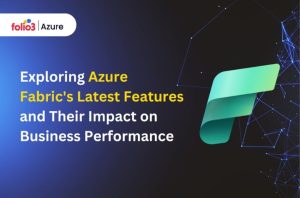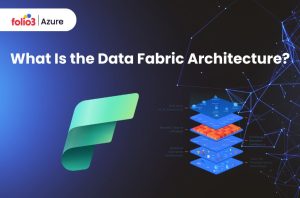Table of Contents
ToggleThe world is becoming increasingly data-centric as we step into the future with every new day. Therefore analyzing the collected data efficiently is critical for making smart business choices. Microsoft Fabric for finance data provides a powerful platform to simplify data analysis.
Regardless of the types of data sets you’re handling, whether financial or any other, Microsoft Fabric provides efficient tools and features to maximize your data analysis processes.
This detailed article will explain the important steps and best practices for using Microsoft Fabric effectively.
Best Practices for Effective Finance Data Analysis With Microsoft Fabric
Following certain best practices is important for getting the most out of Microsoft Fabric for finance data. To fully utilize Microsoft Fabric’s potential, consider the following advice and techniques:
Data Preparation Tips
Data Cleaning Methods
Before importing data into Microsoft Fabric, ensure it is clean and well-structured. Proper data cleaning methods can avoid errors and increase the accuracy of data analysis. Use programs such as Microsoft Power Query to manage missing information, eliminate duplicates, and standardize data formats.
Data Integration Techniques
Data integration techniques can easily collect and merge data from multiple sources. For example, connectors can be used to integrate data from SQL databases, Excel files, and cloud storage. Ensure that data formats are consistent to ensure smooth and easy integration.
Automating Data Workflows
Microsoft Fabric enables you to automate repetitive tasks, saving time and reducing the chances of human error. Use Power Automate to create workflows that initiate data updates, send notifications, or perform data transformations automatically.
Utilizing Data Analysis Tools
To enhance your analytical capacity, acquaint yourself with the data analysis tools embedded in the Microsoft Fabric. Powerful Tools like Power BI help powerful data visualization features. You create reports with valuable information and dashboards.
Common Pitfalls to Avoid
Neglecting Data Cleaning
Results may be erroneous if cleaning methods are neglected. Before analysis, make sure your data is error-free and inconsistent.
Improper Data Integration
Ensure all data sources are correctly integrated to avoid inconsistencies. Inconsistent data can lead to faulty analysis and incorrect conclusions.
Overlooking Advanced Features
The advanced analytics features could provide more in-depth information, so don’t neglect them. Use AI and machine learning skills to find hidden trends and patterns in your data.
Setting Up Microsoft Fabric
Before exploring data analysis, you need to set up Microsoft Fabric. Here are the requirements and a step-by-step guide for doing that:
Requirements and Prerequisites
1. Account Creation
First of all, sign up for a Microsoft account if you don’t already have one. Make sure that your email address and phone number are valid for account verification.
2. Subscription Options
Select a suitable subscription plan based on your data requirements and budget. Microsoft Fabric offers numerous plans, including free trials, to help you get started.
3. Necessary Tools and Extensions
Ensure you have the tools and extensions installed for a successful setup. This may include Power BI, Azure Data Factory, and other Microsoft services.
Step-by-Step Guide
1. Account Creation
Access the Microsoft Fabric’s website and create an account. Follow the instructions to verify your email address and phone number.
2. Subscription Options
Select a subscription plan that fulfills your data analysis requirements. Depending on your budget and requirements, you can select from monthly or annual plans.
3. Installing Tools
Download and install the necessary tools and extensions to initiate full functionality. This may include Power BI Desktop, Azure Data Factory, and Microsoft Fabric connectors.
Importing and Integrating Data
Importing and integrating your data is fundamental in implementing Microsoft Fabric for finance data analysis. Here’s how to go about it successfully:
Overview of Data Sources
Microsoft Fabric supports multiple data sources, including databases, cloud storage, and on-premises data. CSV files, Azure Data Lake, and SQL databases are common sources.
By supporting various data sources, Microsoft Fabric enables you to combine data from many systems and provides a comprehensive picture of your data environment.
Steps to Import Data
1. Connecting to Databases
Use built-in connectors to connect Microsoft Fabric with your databases. For example, you can use native connectors to connect to SQL Server, MySQL, or PostgreSQL databases.
2. Cloud Storage Integration
Connect to cloud storage services like Azure Blob Storage to import data. Microsoft Fabric supports easy and smooth integration with Azure services, allowing you to import data stored in Azure Data Lake or Azure SQL Database.
3. Data Import Options
You can choose from various data import options and formats to suit your needs. Depending on your data sources, you can import data from CSV files, Excel spreadsheets, or JSON files.
Data Integration Best Practices
1. Consistency
Ensure that the data is consistent among all sources. Before integrating, use data validation methods to find and fix any discrepancies.
2. Data Cleaning Methods
To prepare data for analysis, use strong data-cleaning techniques. To guarantee high-quality data, eliminate duplicates, manage missing values, and standardize data formats.
3. Automating Data Workflows
Data integration procedures should be automated to improve workflows. Use Azure Data Factory to create data pipelines that automatically extract, convert, and load data into Microsoft Fabric.
Data Analysis Techniques
Microsoft Fabric provides numerous data analysis techniques to derive meaningful information. Here’s their overview and how to apply them:
Common Data Analysis Techniques
1. Descriptive Analysis
Compile historical data to understand the historical trends. Use tools like Power BI to produce data visualizations that highlight important metrics and trends in your data.
2. Predictive Analysis
Use statistical models to predict future outcomes. Utilize machine learning algorithms in Microsoft Fabric to build predictive models that can forecast sales, customer behavior, or market trends.
3. Prescriptive Analysis
Recommend actions based on predictive insights. By evaluating past data and predicting future trends, you can make intelligent decisions and recommend required actions to meet the goals and targets.
Applying Techniques with Microsoft Fabric
1. Built-in Analytics Tools
Use the built-in analytics features in Microsoft Fabric for different kinds of analysis. To help you better understand your data, Power BI, for instance, provides a variety of visualization choices, including charts, graphs, and dashboards.
2. Writing and Executing Queries
Write and execute queries to extract specific data and information. Use SQL queries or DAX (Data Analysis Expressions) in Power BI to analyze data and generate reports.
Advanced Analytics with Microsoft Fabric
Microsoft Fabric’s advanced analytics features, such as machine learning and artificial intelligence, can immensely increase your data analysis capabilities.
Introduction to Advanced Analytics Features
1. Machine Learning
Develop and apply machine learning models to examine trends in data. Use Azure Machine Learning to create and train models to predict consumer behavior, identify abnormalities, and classify data.
2. Artificial Intelligence
Use AI tools for predictive analytics and gaining deeper insights. Microsoft Fabric integrates with Azure AI services, enabling you to use pre-built AI models or create custom AI solutions to analyze your data.
Leveraging Advanced Features
1. Setting Up Machine Learning Models
Follow the step-by-step instructions to set up and train machine learning models in Microsoft Fabric. Use Azure Machine Learning Studio to design experiments, train models, and assess the outcomes.
2. Using AI Tools
Use AI tools to refine and enhance predictive analytics and make more intelligent decisions. For example, natural language processing (NLP) models can analyze customer feedback, and image recognition models can classify visual data.
Advanced Analytics Use Cases
1. Customer Segmentation
Use machine learning models to categorize customers based on their behavior and preferences. This enables you to design and target marketing strategies more effectively and improve customer satisfaction.
2. Fraud Detection
Utilize AI tools to detect fraudulent transactions in real time. By analyzing transaction patterns and identifying discrepancies, you can prevent fraud and protect your business.
3. Supply Chain Optimization
Use predictive analytics to organize your supply chain processes. By forecasting demand and identifying potential disruptions, you can ensure smooth operations and minimize costs.
Conclusion
Microsoft Fabric for finance data analysis is a powerful technology that can reshape and transform how you handle and analyze data. Following the best practices recommended above, such as setting up the platform correctly and utilizing advanced features, you may get more excellent business results and gain deeper insights.
Microsoft Fabric provides a wide range of data analysis features that help you make intelligent choices, improve operations, and achieve your business objectives.
To explore data analytics solutions and how they can benefit your business, visit Azure Data Analytics.
By following this detailed guide, you’ll be well-equipped to use Microsoft Fabric for effective data analysis, ensuring you make the most of your data to make strategic decisions for a bright future!


